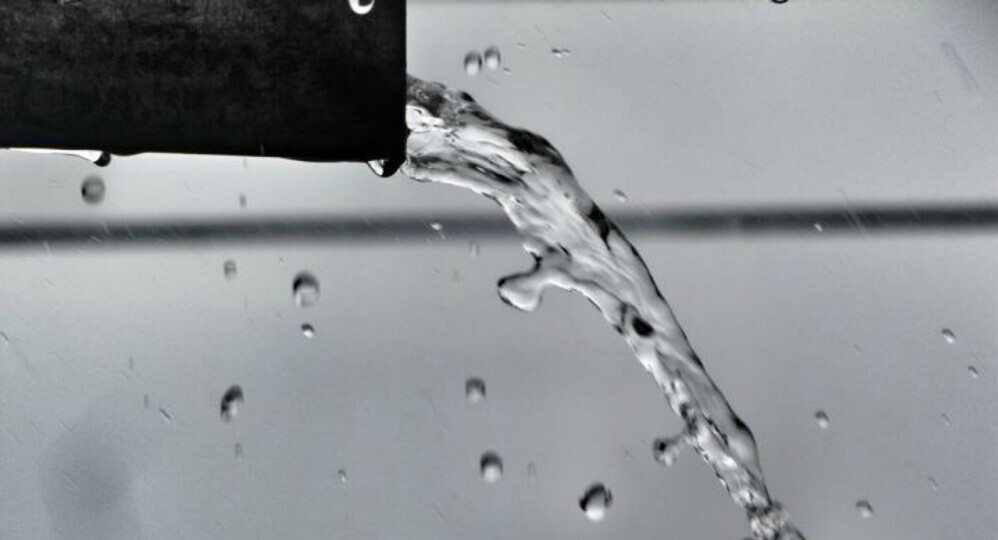Alright, folks, the first step in setting up your DIY outside drainage system is understanding where the problem areas are. Look for spots where water tends to pool after a heavy rain or where erosion is starting to carve out little canyons in your yard. Also be sure to check the structures in the yard as well, Do you have a Deck? Shed? Patio? In these area’s your won’t see a whole lot “canyons” per-say. What you may see instead is an uneven deck, or a spongy feel when walking across the deck. With a shed you may notice wet spots or rotten areas along the bottom of the base. With a patio or any concrete or stepping stones you may see sunken areas or cracking of the bricks or stones These are your prime candidates for drainage improvement.
Next, pay attention to how your land naturally slopes. This is super important because you’ll want your drainage system to make the most of gravity. That being said we can also build up the ground level in order to help out that process as well. Watch how water moves across your property when it rains. Does it all end up in that one low corner? That’s where your system might need to start.
When you are ready to start a “mock up” of what your plan shoud look like you will need to call your city/town office and get the number to call before you dig in your yard, This is so we can safely maneuver around any service lines that might be buried in the yard.
Also, don’t forget the soil type and overall layout of your yard. Sandy soil drains faster than clay, which holds onto water longer. Knowing this helps you figure out how extensive your drainage system needs to be. Take a good look at your landscape, noting any obstacles like trees or driveways that could affect your plans.
Above all else be sure to CALL before you DIG!
Planning Your Drainage System
Now that you have an idea on your yard’s trouble spots and the terrain. Now it’s time to map out an efficient drainage layout. Start by sketching your yard and marking the areas where the water problems are. Remember to include any slopes or high points or areas that we may need to fill in order to assist gravity in your sketch. This is also an excellent time to call before you dig! As there may be gas, water, sewage or power lines buried underground and it would be DISASTROUS if we damaged one of those.
When it comes to material and tools, a solid plan means you won’t be running back and forth to the store. You’ll need drainage pipes, landscape fabric, gravel, stakes, a shovel, a measuring tape and a level are the keys to a job well accomplished. Make sure to get enough length of pipe to cover the entire drainage path plus a little extra, just in case. Also keep in mind that critters and get into these pipes and build nests and the lot, so if this is an issue in your area remember to grab some caps for the ends of those pipes and drill holes to allow for drainage.
Lets get that sketch off of the paper! But before we get started…….
Did you call before we start digging?
Okay Great! Lets grab some stakes and string to help mark out the actual path your trench will follow. This makes digging way easier and ensures you’re sticking to the plan. Use your sketch as a guide and physically mark the path in your yard. Now you will want to grab the level at this point as well to ensure that the slope continues to increase in depth following the natural slope to help guide the water flow in the right direction.
Now that everything’s mapped out and marked, you’re ready to start digging. But hold on! Double-check your plan to make sure everything’s in place. I will say this one more time for the people in back…
CALL BEFORE YOU DIG!!!!!!
This upfront prep work can save a ton of hassle later.
Step-by-Step Installation Process
Grab that shovel because it’s time to start digging the trench. Aim for about 6 inches wide and 18 inches deep, but this can vary based on how much water you need to move. The key here is keeping a consistent slope, so water flows easily. Use a level or a string line to ensure your trench has a gentle decline.
Once your trench is prepped, it’s time to prepare the bottom. Lay down a few inches of gravel to create a stable base. This helps with drainage and provides a solid foundation for your pipe.
Now, position your drainage pipe in the trench, making sure it follows the slope you’ve established. The pipe should ideally have perforations to allow water to enter from all sides and should be wrapped in fabric to prevent soil from clogging the holes.
Next up, line the trench with landscaping fabric. This step is crucial since it keeps dirt and roots from infiltrating your system, extending its lifespan. Ensure the fabric overlaps and goes up the sides of the trench a bit.
With the fabric in place, start backfilling the trench. Add more gravel around the pipe, making sure it stays sloped. Then, cover the top with soil, packing it down to avoid future sinkholes. This keeps your setup neat and prevents tripping hazards.
Creating drainage outlets is the final part of installation. These outlets direct water away from your home to a safe area. Strategically place them where water can be absorbed into the ground without causing new issues.
Take a step back and admire your handiwork! But before calling it done, do a quick test to make sure your system works flawlessly. Pour water at the highest point and watch it flow through the pipe, checking for any blockages or areas where water pools.
Testing and Maintaining Your System
Now that your drainage system is installed, it’s time to see it in action. Grab a hose or a couple of buckets of water and pour it into the highest point of your setup. Watch the water travel through the pipe, down the trench, and out the drainage outlets. You’re looking for smooth flow with no pooling or slow spots.
Once you’ve confirmed everything works as planned, it’s important to think about maintenance. Regularly check your drainage system, especially after heavy rain, to ensure it’s still functioning properly. Remove any debris from the outlets and unclog any blockages you spot in the pipes. Even the best systems can build up dirt and leaves over time, which can hinder water flow.
Keep an eye out for any signs of trouble, like slow drainage or water backing up at the inlet. These could indicate issues like a partially blocked pipe or a shifted trench. Address these problems sooner rather than later to avoid bigger headaches down the road.
Seasonal care is also crucial. Before winter hits, make sure your system is clear of debris and functioning well. Freezing and thawing cycles can create new issues, so regular checks can save you a lot of hassle. In the warmer months, trim any plants or roots that might interfere with your trench or pipes.
With a little upkeep, your DIY drainage system will keep your yard free of water troubles for years to come.

What a fantastic guide on creating an outdoor drainage system! I love how you broke down the steps so clearly. It’s amazing how a well-planned drainage system can transform a yard, preventing water pooling and protecting our homes.
I’ve always believed that taking care of our outdoor spaces is just as important as the inside of our homes. It not only enhances the beauty of our surroundings but also helps maintain the integrity of our properties. Your tips on choosing the right materials were especially helpful—I never realized how much of a difference that could make!
One question I have is, what are some common mistakes to avoid when setting up a drainage system? I think that would be really useful for anyone tackling this project. Thanks for sharing such valuable insights!
Hello Maxon,
Some common pit falls that I have run into it making sure that before you start any project that requires digging is to call your local city or town bylaw office to have someone come out and mark any utility lines that may be buried. Digging through one of those can end up in costly repairs and you would likely require a certified professional to come come repair, Often time insurance won’t cover mistakes we make on our homes either, so I would be extra extra careful on that. Do your best to map out where the drain needs to go and be ready to make changes on fly because it is hard to see tree roots and rocks and boulders so you may need to divert around those things. Lastly don’t forget to make yourself a shopping list a very bad habit for me I always think I will remember what I need, then 10 trips later to the hard store I am sure I forgot something again! Thank-you for your comment Maxon.
Happy DIY’ing!
Hello Becky!
Your step-by-step guide on creating a DIY outside drainage system is fantastic! I really appreciate how detailed and approachable you made the process, especially for someone like me who is not exactly a pro when it comes to outdoor projects. The way you explained the tools and materials needed, along with the clear breakdown of each step, makes it feel totally doable.
I do have a couple of questions, though. How well does this system hold up in areas with heavy rainfall? Would you recommend any additional measures for regions prone to flooding? Also, if someone already has some drainage issues, would you suggest fixing those first or can this project address existing problems too?
Your passion for helping others tackle home projects really shines through in your writing, and I can see this guide inspiring a lot of people to roll up their sleeves and improve their outdoor spaces!
Angela M 🙂
Hello Angela, Thank-you for your comment!
In my experience I have noticed that these types of drains are capable of handling a lot of water movement. Sometimes instead of just one pipe you may want to consider two drain pipes in order to handle the amount of water you need to deal with. The biggest trick and obstacle you may come across is how to divert the water correctly. This is where you would need to study the land you are dealing with, different soil’s will act differently and will also play a factor in how much water will be absorbed and also the gradient of the land and how far of a slope you can deal with in order to divert the run-of properly.
Happy DIY’ing!